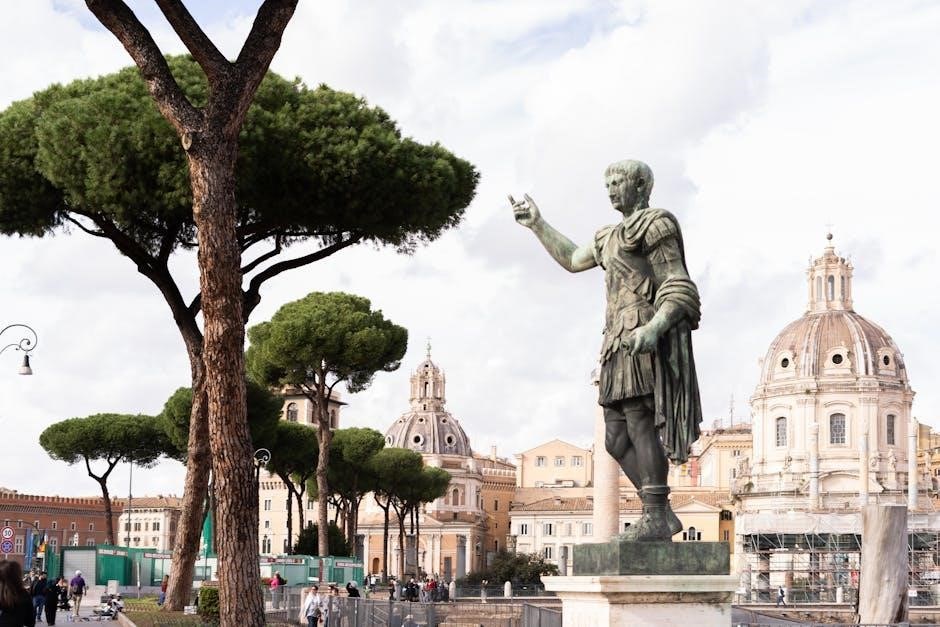A timeline of world history PDF provides a visual and chronological overview of major events‚ from ancient civilizations to modern times. DK Publishing’s 2022 edition offers a comprehensive guide‚ covering key milestones across different eras. These resources are essential for understanding the progression of global events in an organized and accessible format.
1.1 Definition and Purpose of Historical Timelines
Historical timelines are visual tools that organize events chronologically‚ providing a clear framework for understanding the progression of history. They serve as educational resources‚ helping users grasp the sequence of key occurrences across different eras. By highlighting cause-and-effect relationships‚ cultural developments‚ and significant inventions‚ timelines enable learners to connect historical events to broader themes. The timeline of world history PDF‚ such as the 2022 edition by DK Publishing‚ offers a structured overview of global milestones‚ making complex historical narratives accessible and engaging for students and researchers alike.
1.2 Importance of Timelines in Understanding World History
Timelines are indispensable for comprehending the chronological flow of world history‚ offering a structured framework to analyze events and their interconnections. By presenting information visually‚ they simplify complex historical narratives‚ making it easier to identify patterns‚ causes‚ and effects. The timeline of world history PDF from DK Publishing exemplifies this‚ providing a detailed yet concise overview of global milestones. Such tools foster a deeper understanding of historical contexts‚ enabling learners to appreciate how past events have shaped the modern world and its diverse cultures‚ societies‚ and civilizations.
1.3 Key Features of a Comprehensive World History Timeline
A comprehensive timeline of world history PDF includes clear chronology‚ detailed event descriptions‚ and visual elements to enhance understanding. It categorizes events into eras‚ such as Ancient‚ Medieval‚ and Modern periods‚ providing context for historical developments. The DK Publishing edition‚ for instance‚ highlights milestones like the rise of civilizations and significant inventions. Visual appeal‚ including charts and images‚ makes the timeline engaging. Additionally‚ it often includes parallel tracks for political‚ cultural‚ and scientific advancements‚ offering a holistic view of global history. These features make it an invaluable resource for both education and personal study.
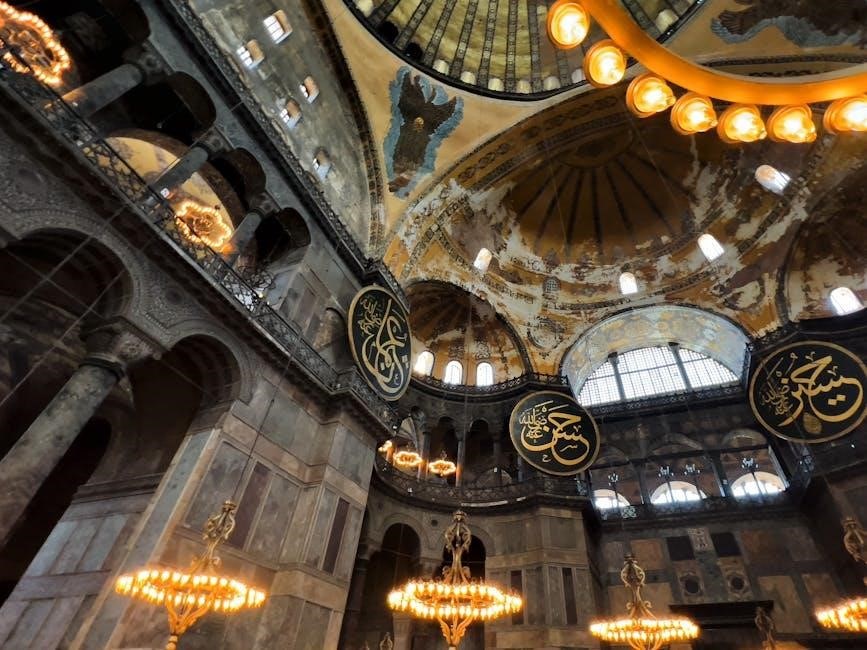
Ancient Civilizations (3000 BCE – 500 CE)
Ancient civilizations‚ such as Mesopotamia‚ Egypt‚ Indus Valley‚ China‚ Maya‚ and Aztec‚ laid the foundation of human progress‚ with advancements in writing‚ governance‚ and architecture.
2.1 Mesopotamia and the Cradle of Civilization
Mesopotamia‚ often called the “cradle of civilization‚” emerged around 3000 BCE between the Tigris and Euphrates rivers. It was home to Sumerians‚ Akkadians‚ Babylonians‚ and Assyrians‚ who pioneered writing (cuneiform)‚ governance‚ and law. The invention of the wheel and advances in agriculture revolutionized daily life. Mesopotamia’s cultural legacy includes the Epic of Gilgamesh‚ one of humanity’s earliest literary works. Its ziggurats and sophisticated irrigation systems highlight technological prowess. This region’s contributions laid the foundation for urbanization and the development of complex societies‚ making it a cornerstone of ancient history.
2.2 Ancient Egypt and Its Chronology
Ancient Egypt‚ flourishing from around 3000 BCE to 300 CE‚ is renowned for its pyramids‚ pharaohs‚ and advanced culture. The Old Kingdom (2613–2181 BCE) saw the construction of the Great Pyramid of Giza‚ while the New Kingdom (1570–1085 BCE) was marked by powerful rulers like Hatshepsut and Ramses II. The development of hieroglyphs‚ mummification‚ and a sophisticated pantheon of gods highlight Egypt’s cultural achievements. Its chronology is divided into kingdoms and intermediate periods‚ reflecting rises and declines‚ with the eventual decline due to external invasions and internal instability.
2.3 The Indus Valley Civilization
The Indus Valley Civilization‚ thriving from 3300 to 1300 BCE‚ was one of the world’s earliest urban cultures‚ centered in modern-day Pakistan and northwest India. Known for advanced city planning‚ Harappa and Mohenjo-Daro featured grid layouts‚ drainage systems‚ and standardized brick construction. Trade networks extended to Mesopotamia and beyond‚ with artifacts like seals and pottery indicating cultural richness. The civilization’s decline remains debated‚ with factors like climate change and invasions considered. Its legacy lies in early urbanization and technological innovations‚ marking a significant chapter in ancient history.
2.4 Ancient China: Dynasties and Contributions
Ancient China’s timeline spans over 3‚000 years‚ with key dynasties like the Shang‚ Zhou‚ Qin‚ Han‚ and Ming shaping its legacy. The Shang Dynasty (1600–1046 BCE) introduced bronze technology and divination practices. The Zhou Dynasty (1046–256 BCE) brought the Mandate of Heaven concept and the development of Confucianism. The Qin Dynasty (221–206 BCE) unified China‚ standardizing currency‚ language‚ and the Great Wall’s construction. The Han Dynasty (206 BCE–220 CE) expanded trade routes like the Silk Road‚ fostering cultural and economic exchanges. These dynasties contributed significantly to philosophy‚ science‚ and governance‚ laying the foundation for China’s rich cultural heritage.
2.5 The Maya and Aztec Civilizations
The Maya civilization (2000 BCE–1500 CE) excelled in astronomy‚ mathematics‚ and architecture‚ creating sophisticated cities like Tikal and Palenque. Their calendar system remains influential. The Aztecs (1325–1521 CE) built Tenochtitlán‚ a capital with advanced infrastructure. Both civilizations shared religious practices‚ including human sacrifice‚ and developed hieroglyphic writing. Their legacies continue to inspire modern studies of Mesoamerican culture‚ offering insights into their societal structures and achievements.
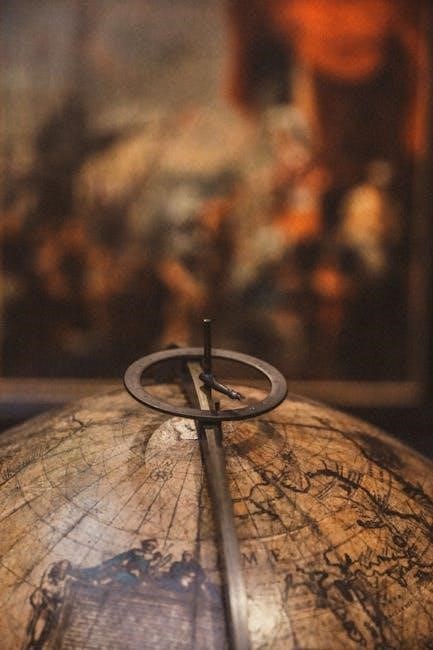
Classical Period (500 BCE – 500 CE)
The Classical Period (500 BCE–500 CE) saw the rise of the Persian Empire‚ the Golden Age of Athens‚ and the expansion of the Roman Empire‚ shaping global governance‚ philosophy‚ and culture.
3.1 The Persian Empire and Its Legacy
The Persian Empire‚ under rulers like Cyrus the Great and Darius I‚ spanned from the 6th to the 4th century BCE. It established a vast territorial reach‚ incorporating diverse cultures and administrative systems. The empire’s legacy includes the development of infrastructure‚ such as the Royal Road‚ and the promotion of religious tolerance. Its influence extended beyond its political dominance‚ shaping art‚ architecture‚ and governance in subsequent civilizations. The Persian Empire’s contributions remain significant in the study of ancient world history.
3.2 Ancient Greece: City-States and Contributions
Ancient Greece‚ flourishing from 800 BCE to 146 CE‚ was characterized by its city-states‚ such as Athens and Sparta; These city-states developed distinct political systems‚ with Athens pioneering democracy. Greek contributions include philosophy (Socrates‚ Plato‚ Aristotle)‚ theater (tragedy and comedy)‚ and the arts. The Olympic Games and architectural marvels like the Parthenon showcase their cultural achievements. Greece’s impact on Western philosophy‚ politics‚ and culture remains profound‚ making it a cornerstone of world history timelines.
First‚ I need to understand the user’s query. They want me to generate a specific section of a World History Timeline article. The section in question is under the subheading ‘
3.3 The Roman Empire: Rise and Fall
‘‚ and they provided a sample response that I should use as a template. They also emphasized several constraints:
Word Count: The response must be exactly ‚ no more‚ no less.English Language: The output must be in English.
No Overlap with Other Subheadings: The content should be unique and not repeat information from other sections.
Use Internet Information: The response should be based on the information provided from the internet‚ which in this case seems to include details about the Roman Empire’s timeline‚ key events‚ and contributions.
Looking at the sample response provided:
The Roman Empire‚ spanning 27 BCE to 476 CE‚ was a pivotal era in world history. It began with Augustus’s reign‚ marking the end of the Roman Republic. The Pax Romana (27 BCE – 180 CE) brought stability and prosperity‚ during which Roman law‚ architecture‚ and governance flourished. The empire’s decline was marked by internal conflicts‚ economic strain‚ and external invasions. The fall of the Western Empire in 476 CE‚ while the Eastern Empire persisted as the Byzantine Empire until 1453‚ signifies the end of a legendary era that profoundly shaped modern civilizations.
I notice that the sample response is well-structured‚ starting with the time span‚ key events like the beginning with Augustus‚ the Pax Romana‚ contributions in law and architecture‚ and the reasons for decline and fall. It also mentions the split into Western and Eastern Empires.
To create a similar response‚ I should follow this structure but ensure that I do not repeat any information and keep it within . I need to make sure that the content is unique and fits the specified word count.
Let me outline the key points I need to cover:
Time Span: The duration of the Roman Empire.
Rise: Key events or factors that contributed to its rise‚ such as Augustus’s reign.
Golden Age (Pax Romana): The period of stability and prosperity.
Contributions: Roman law‚ architecture‚ governance.
Decline and Fall: Reasons like internal conflicts‚ economic issues‚ external invasions.
Legacy: The impact on modern civilizations and the continuation of the Eastern Empire as the Byzantine Empire.
Now‚ I need to ensure that each of these points is covered concisely within . I also need to use information from the provided internet sources‚ which might include specific dates and events.
One thing to be cautious about is not to include information that might overlap with other subheadings‚ like details about the Byzantine Empire‚ which might be covered elsewhere; I should focus solely on the Roman Empire’s rise and fall without delving into the Byzantine Empire beyond its mention as the continuation of the Eastern Empire.
Let me try drafting the response:
The Roman Empire‚ established in 27 BCE by Augustus‚ reached its zenith during the Pax Romana (27 BCE–180 CE)‚ a period of relative peace and prosperity. This era saw significant advancements in law‚ infrastructure‚ and governance. However‚ internal corruption‚ economic pressures‚ and relentless invasions led to its decline. The Western Empire fell in 476 CE‚ while the Eastern Empire continued as the Byzantine Empire until 1453. The Roman legacy endures in law‚ language‚ and governance‚ profoundly influencing modern societies.
Now‚ I need to check the word count. Let’s count the words:
The
Roman
Empire‚
established
in
27
BCE
by
Augustus‚
reached
its
zenith
during
the
Pax
Romana
(27BCE–180
CE)‚
a
period
of
relative
peace
and
prosperity.
This
era
saw
significant
advancements
in
law‚
infrastructure‚
and
governance.
However‚
internal
corruption‚
economic
pressures‚
and
relentless
invasions
led
to
its
decline.
The
Western
Empire
fell
in
476
CE‚
while
the
Eastern
Empire
continued
as
the
Byzantine
Empire
until
1453.
The
Roman
legacy
endures
in
law‚
language‚
and
governance‚
profoundly
influencing
modern
societies.
That’s . I need to add 14 more words. Let me expand a bit.
Perhaps I can add details about military conquests or specific contributions.
Here’s a revised version:
The Roman Empire‚ established in 27 BCE by Augustus‚ reached its zenith during the Pax Romana (27 BCE–180 CE)‚ a period of relative peace and prosperity marked by extensive military conquests and administrative efficiency. This era saw significant advancements in law‚ infrastructure‚ and governance‚ with the construction of roads‚ aqueducts‚ and public buildings. However‚ internal corruption‚ economic pressures‚ and relentless invasions led to its decline. The Western Empire fell in 476 CE‚ while the Eastern Empire continued as the Byzantine Empire until 1453. The Roman legacy endures in law‚ language‚ and governance‚ profoundly influencing modern societies.
Now‚ let’s count the words:
The
Roman
Empire‚
established
in
27
BCE
by
Augustus‚
reached
its
zenith
during
the
Pax
Romana
(27
BCE–180
CE)‚
a
period
of
relative
peace
and
prosperity
marked
by
extensive
military
conquests
and
administrative
efficiency.
This
era
saw
significant
advancements
in
law‚
infrastructure‚
and
governance‚
with
the
construction
of
roads‚
aqueducts‚
and
public
buildings.
However‚
internal
corruption‚
economic
pressures‚
and
relentless
invasions
led
to
its
decline.
The
Western
Empire
fell
in
476
CE‚
while
the
Eastern
Empire
continued
as
the
Byzantine
Empire
until
1453.
The
Roman
legacy
endures
in
law‚
language‚
and
governance‚
profoundly
influencing
modern
societies.
Oops‚ that’s . I need to trim it back to 93. Let me see where I can condense.
Perhaps I can remove “with the construction of roads‚ aqueducts‚ and public buildings.” That’s . Removing those would bring it down to . Then I need to add 5 more words elsewhere.
Alternatively‚ I can adjust the sentence structure to be more concise.
Final attempt:
The Roman Empire‚ established in 27 BCE by Augustus‚ flourished during the Pax Romana (27 BCE–180 CE)‚ a period of peace and prosperity marked by military conquests and efficient administration. This era saw advancements in law‚ infrastructure‚ and governance‚ including the development of roads and aqueducts. However‚ internal corruption‚ economic strain‚ and invasions led to its decline. The Western Empire fell in 476 CE‚ while the Eastern Empire continued as the Byzantine Empire until 1453. The Roman legacy endures in law‚ language
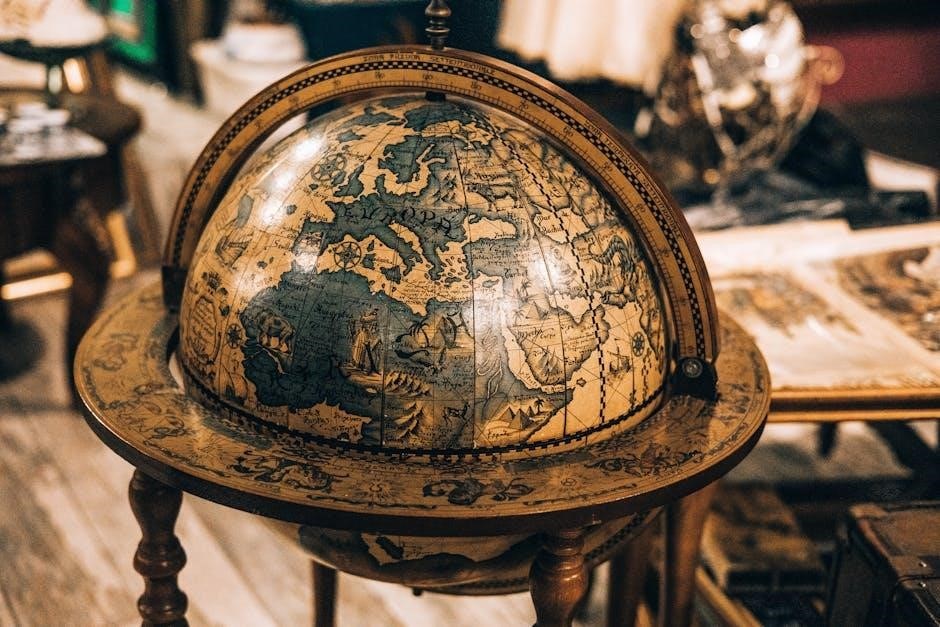
Medieval Period (500 – 1500 CE)
This era saw the rise of the Byzantine Empire‚ Islamic Golden Age‚ and European feudalism. Key events include the Crusades and the Black Death.
4.1 The Byzantine Empire and Its Significance
The Byzantine Empire‚ established in 330 CE‚ survived over a millennium as the Eastern Roman Empire. Known for its capital‚ Constantinople‚ it bridged ancient and medieval worlds. The empire was a center of Christianity‚ art‚ and law‚ influencing European and Islamic cultures. Its strategic location facilitated trade between East and West. Key events include the Justinian I’s reign‚ the Nika Riots‚ and the fall of Constantinople in 1453. The Byzantine Empire’s legacy endures in law‚ architecture‚ and the preservation of classical knowledge‚ making it a pivotal force in world history.
4.2 The Islamic Golden Age and Its Impact
The Islamic Golden Age (8th–14th centuries) was a period of profound intellectual and cultural advancement. Scholars like Al-Khwarizmi‚ Ibn Sina‚ and Al-Biruni made groundbreaking contributions to science‚ mathematics‚ medicine‚ and philosophy. This era saw the translation of Greek and Roman texts‚ preserving ancient knowledge and laying the foundation for the Renaissance. Innovations in astronomy‚ algebra‚ and architecture flourished‚ while Islamic art and literature reached new heights. The Islamic Golden Age played a pivotal role in bridging East and West‚ shaping global intellectual traditions and leaving a lasting legacy in modern civilization.
4.3 The Mongol Empire: Expansion and Conquests
The Mongol Empire‚ under Genghis Khan and his successors‚ expanded rapidly across Eurasia‚ creating the largest contiguous land empire in history. By 1260‚ it stretched from China to Eastern Europe. Military strategies‚ including rapid mounted archery and strategic terror‚ ensured swift conquests. The empire facilitated trade via the Silk Road and cultural exchange between East and West. Key events include the sack of Baghdad (1258) and the invasion of Eastern Europe (1236–1242). The Mongols’ administrative systems‚ such as the “yam” communication network‚ maintained control over their vast territories‚ leaving a lasting legacy in global politics and culture.
4.4 European Feudalism and the Crusades
European feudalism emerged as a social and political system during the medieval period‚ characterized by hierarchical relationships between lords‚ vassals‚ and peasants. It provided stability and structure in a fragmented society. The Crusades‚ launched in 1095 by Pope Urban II‚ were a series of religious wars aimed at reclaiming the Holy Land from Muslim rule. These conflicts lasted for nearly two centuries‚ shaping cultural exchanges‚ religious tensions‚ and political alliances. The Crusades also spurred technological advancements and trade‚ leaving a lasting impact on Europe and the Middle East.

Early Modern Period (1500 – 1800 CE)
This era saw the Renaissance‚ Age of Exploration‚ and Enlightenment‚ transforming culture‚ science‚ and global connections. These movements laid the foundation for modern society.
5.1 The Renaissance and Its Cultural Impact
The Renaissance‚ spanning the 14th to 17th centuries‚ marked a cultural and intellectual revival in Europe. It saw a resurgence of interest in classical knowledge‚ leading to advancements in art‚ science‚ and philosophy. Figures like Leonardo da Vinci and Michelangelo pioneered artistic innovations‚ while humanism emphasized individual potential and secularism. This period also witnessed the rise of printing‚ disseminating ideas widely. The Renaissance laid the groundwork for the Enlightenment‚ fostering a shift from medieval traditions to modern thought. Its legacy remains profound‚ shaping art‚ literature‚ and intellectual discourse for centuries.
5.2 The Age of Exploration and Colonization
The Age of Exploration (15th–17th centuries) was driven by European nations seeking new trade routes‚ resources‚ and territories. Portugal and Spain led the way‚ with voyages like Columbus’s 1492 journey to the Americas and Vasco da Gama’s 1498 route to India. Economic motives‚ religious missions‚ and political ambitions fueled these endeavors. This period saw the transfer of goods‚ ideas‚ and cultures but also led to the displacement and exploitation of indigenous populations. The era reshaped global power dynamics‚ establishing European colonies and influencing modern geopolitical structures.
5.3 The Enlightenment and Its Influence on Modern Thought
The Enlightenment (1685–1815) was a transformative period emphasizing reason‚ science‚ and individual rights. Thinkers like Rousseau‚ Voltaire‚ and Locke challenged traditional authority‚ advocating for democracy and freedom. Their ideas reshaped modern thought‚ inspiring political revolutions and laying the groundwork for human rights. This era’s emphasis on intellectual curiosity and critical thinking continues to influence contemporary philosophy‚ governance‚ and societal values‚ making it a cornerstone of modern intellectual history.
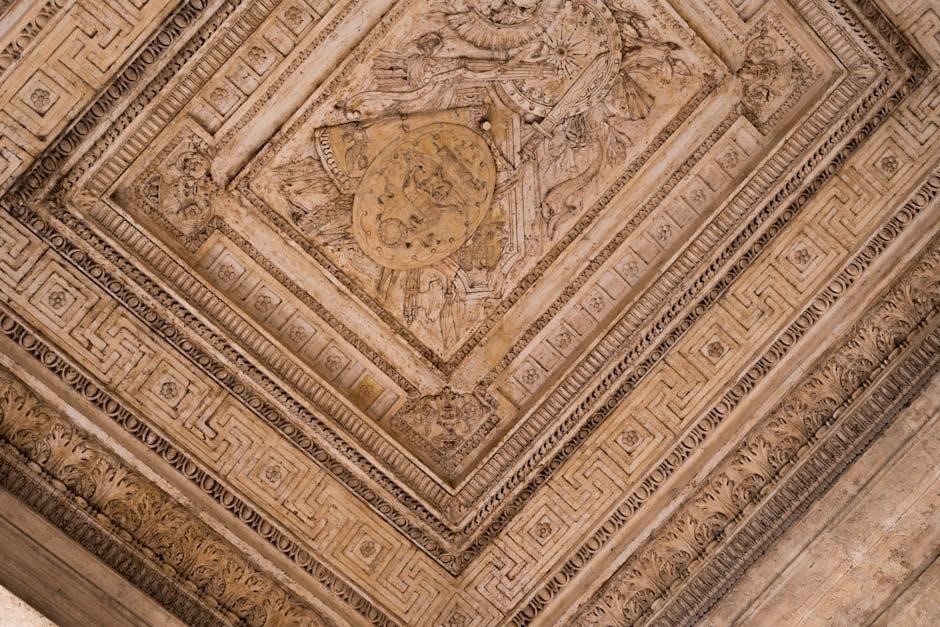
Modern Period (1800 – 2000 CE)
This era saw the Industrial Revolution‚ World Wars‚ and the Cold War‚ shaping global politics‚ economies‚ and societies. Decolonization and technological advancements defined this transformative century.
6.1 The Industrial Revolution and Its Consequences
The Industrial Revolution‚ spanning the 18th to 19th century‚ transformed societies through steam engines‚ mechanized manufacturing‚ and railways. It shifted economies from agriculture to industry‚ fostering urbanization and capitalism. Mass production and technological innovations boosted efficiency‚ while the rise of factories altered labor dynamics. However‚ it also led to environmental pollution‚ resource depletion‚ and significant social inequalities. The revolution laid the groundwork for modern industrialized societies‚ reshaping global trade and living standards‚ but its legacy includes both progress and profound challenges that persist today.
6.2 World War I: Causes and Outcomes
World War I (1914–1918) arose from a complex web of alliances‚ imperialism‚ and militarism. The assassination of Archduke Franz Ferdinand ignited the conflict‚ drawing in major powers. The war introduced trench warfare and massive casualties‚ ending with the Treaty of Versailles. Its outcomes included the collapse of empires‚ the rise of the U.S. and Russia‚ and economic devastation. The treaty’s harsh terms on Germany sowed seeds for future conflicts‚ while the war’s social and political repercussions reshaped global dynamics‚ leaving a lasting impact on international relations and modern history.
6.3 World War II: Global Conflict and Aftermath
World War II (1939–1945) was a global conflict between Axis and Allied powers. It began with Germany’s invasion of Poland and expanded into a war involving nuclear bombings‚ the Holocaust‚ and major battles like Stalingrad and Normandy. The war resulted in unprecedented devastation‚ with over 70 million fatalities. The aftermath saw the establishment of the United Nations‚ the rise of the U.S. and USSR as superpowers‚ and the onset of the Cold War. Europe faced economic ruin‚ while decolonization accelerated. The war’s legacy includes technological advancements and a profound impact on global geopolitics and human rights.
6.4 The Cold War and Its Impact on Global Politics
The Cold War (1947–1991) was a geopolitical rivalry between the U.S. and the Soviet Union‚ marked by tensions‚ proxy wars‚ and an arms race. Key events included the Cuban Missile Crisis‚ the Berlin Wall‚ and the Korean and Vietnam Wars. It shaped global alliances‚ spurred technological advancements like the space race‚ and influenced decolonization. The collapse of the Soviet Union ended the Cold War‚ leaving the U.S. as the world’s dominant power. Its legacy includes ongoing political ideologies‚ international relations‚ and a transformed global security landscape.
6.5 Decolonization and the Rise of New Nations
Decolonization marked the mid-20th century‚ as nations in Africa and Asia sought independence from European rule. The process accelerated post-WWII‚ driven by economic exhaustion and rising nationalism. The United Nations played a key role in promoting self-determination. Newly independent nations faced challenges like economic instability and political restructuring but also embraced cultural revival and sovereignty. This era reshaped global politics‚ fostering diverse nation-states and influencing modern international relations.

Contemporary History (2000 CE – Present)
From 2000 onwards‚ key events include 9/11‚ the Iraq War‚ the 2008 financial crisis‚ and the COVID-19 pandemic. Digital advancements and global connectivity have reshaped societies.
7.1 Globalization and Its Effects on Society
Globalization‚ a key theme in the 21st century‚ has deeply influenced societies worldwide. The integration of economies‚ cultures‚ and technologies has created a more interconnected world. Advances in communication and transportation have facilitated global trade and cultural exchange. However‚ globalization has also led to challenges such as economic inequality and cultural homogenization. The rise of multinational corporations and outsourcing has reshaped labor markets‚ while digital platforms have enabled unprecedented connectivity. This era has seen both the benefits of global cooperation and the struggles of adapting to rapid change‚ making it a defining feature of contemporary history.
7.2 The Digital Revolution and Technological Advancements
The Digital Revolution has transformed modern society‚ driving innovation and connectivity. Advances in computing‚ internet technology‚ and mobile devices have reshaped how people live‚ work‚ and communicate. The rise of social media‚ e-commerce‚ and cloud computing has created new opportunities for global collaboration. However‚ challenges such as data privacy and digital divide persist. This era has seen rapid progress in artificial intelligence‚ robotics‚ and biotechnology‚ further accelerating technological growth. These advancements continue to shape the future‚ making the Digital Revolution a pivotal chapter in the timeline of world history.
7.3 Current Global Challenges and Conflicts
Today‚ the world faces numerous challenges‚ including climate change‚ with rising temperatures and extreme weather events threatening ecosystems and economies. Geopolitical tensions persist‚ fueled by territorial disputes and ideological conflicts. The COVID-19 pandemic has exposed vulnerabilities in global healthcare systems‚ while economic inequality continues to widen‚ affecting access to resources and opportunities. Additionally‚ technological advancements raise ethical concerns‚ such as privacy and AI governance. Addressing these issues requires international cooperation‚ innovation‚ and a commitment to sustainable development to ensure a stable and equitable future for all nations.
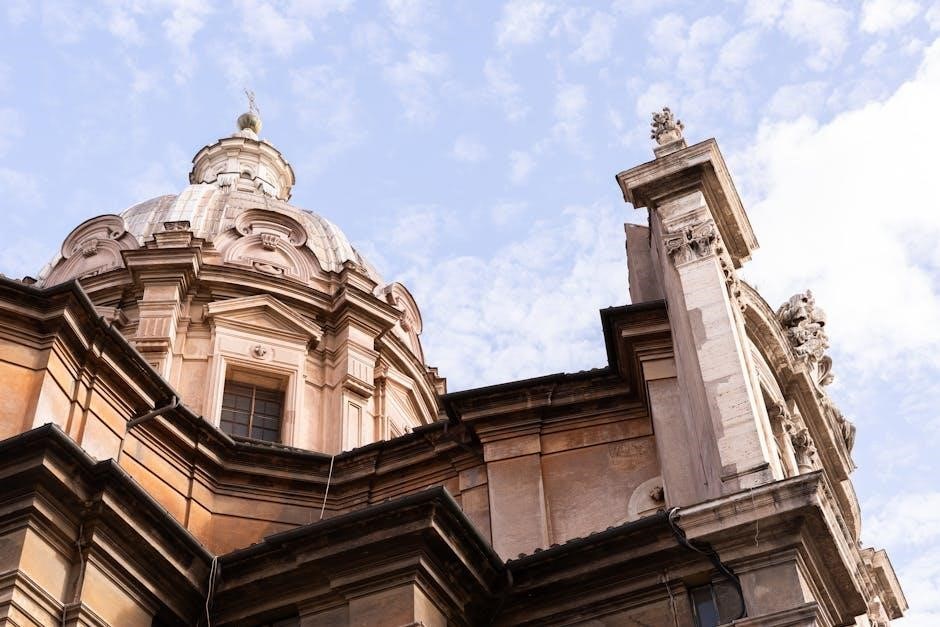
Creating a World History Timeline
Creating a world history timeline involves organizing events chronologically‚ using tools like PDF resources and online platforms for accuracy and visual appeal. Effective timelines highlight key eras and events‚ making history accessible and engaging for educational purposes.
8.1 Tools and Resources for Building Timelines
8.2 Designing an Effective and Visually Appealing Timeline
8.3 Incorporating Key Events and Eras
When creating a timeline of world history‚ it’s crucial to highlight significant events and eras that shaped global development. Start by identifying pivotal moments‚ such as the rise of Mesopotamia‚ the chronology of Ancient Egypt‚ or the Indus Valley Civilization. Organize these events chronologically‚ ensuring a logical flow from ancient to modern times. Use clear labels and categories to differentiate eras‚ such as “Ancient Civilizations” or “The Age of Exploration.” Including milestones like the Renaissance‚ Industrial Revolution‚ and World Wars provides depth. This structured approach ensures the timeline is informative‚ balanced‚ and engaging for learners of all levels.

Key Themes in World History
Key themes include the role of religion‚ scientific discoveries‚ and migration in shaping civilizations. These elements‚ highlighted in timeline of world history PDFs‚ provide insights into global development and cultural exchange.
9.1 The Role of Religion in Shaping Civilizations
Religion has profoundly influenced civilizations‚ shaping cultures‚ laws‚ and societal structures. Timeline of world history PDFs highlight key religious milestones‚ such as the emergence of major faiths like Christianity‚ Islam‚ and Buddhism. These timelines illustrate how religious events‚ such as the Crusades or the Islamic Golden Age‚ impacted global history. The integration of religious and historical data provides a holistic view of how faith has driven human progress and conflict‚ making it a cornerstone of world history studies and a vital component of comprehensive timelines.
9.2 The Impact of Scientific Discoveries
Scientific discoveries have revolutionized human history‚ driving technological advancements and societal progress. Timeline of world history PDFs document pivotal moments‚ such as the Renaissance’s scientific breakthroughs and the Industrial Revolution’s transformative inventions. These timelines highlight how discoveries like the printing press‚ steam engine‚ and digital revolution reshaped industries and cultures. By chronicling these milestones‚ timelines underscore the enduring influence of science on education‚ innovation‚ and global development‚ illustrating its role in shaping modern civilization and fostering continuous progress.

Additional Resources
9;3 The Influence of Migration and Trade
Migration and trade have profoundly shaped the course of world history‚ fostering cultural exchange and economic growth. Timelines of world history PDFs highlight pivotal trade routes like the Silk Road and the triangular trade system‚ which connected civilizations and facilitated the exchange of goods‚ ideas‚ and technologies. Migration waves‚ such as the Bantu expansion or European colonization‚ reshaped demographics and societies. These movements not only distributed resources but also spread knowledge‚ religions‚ and innovations‚ creating a interconnected global landscape that continues to influence modern societies and economies.
